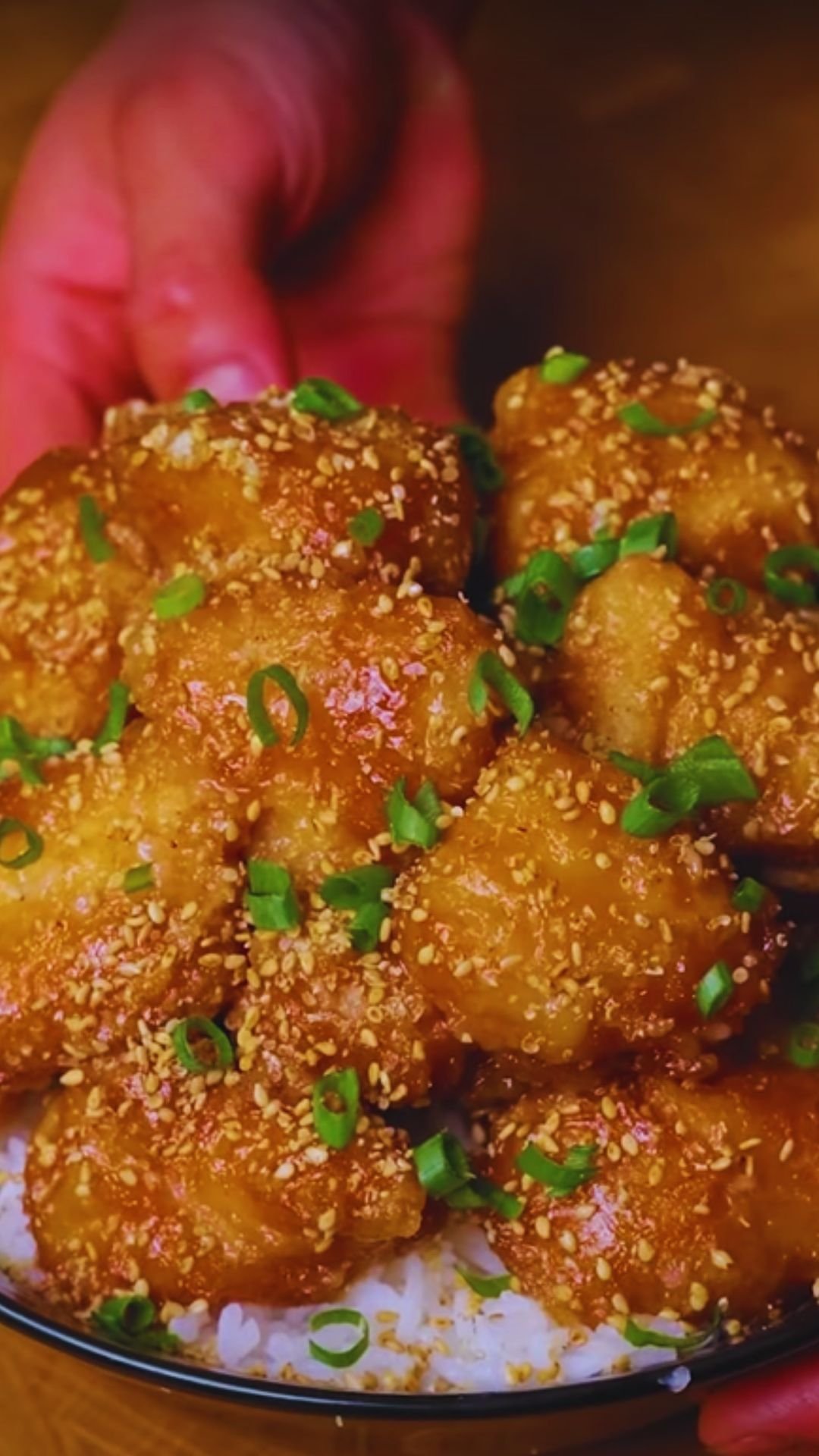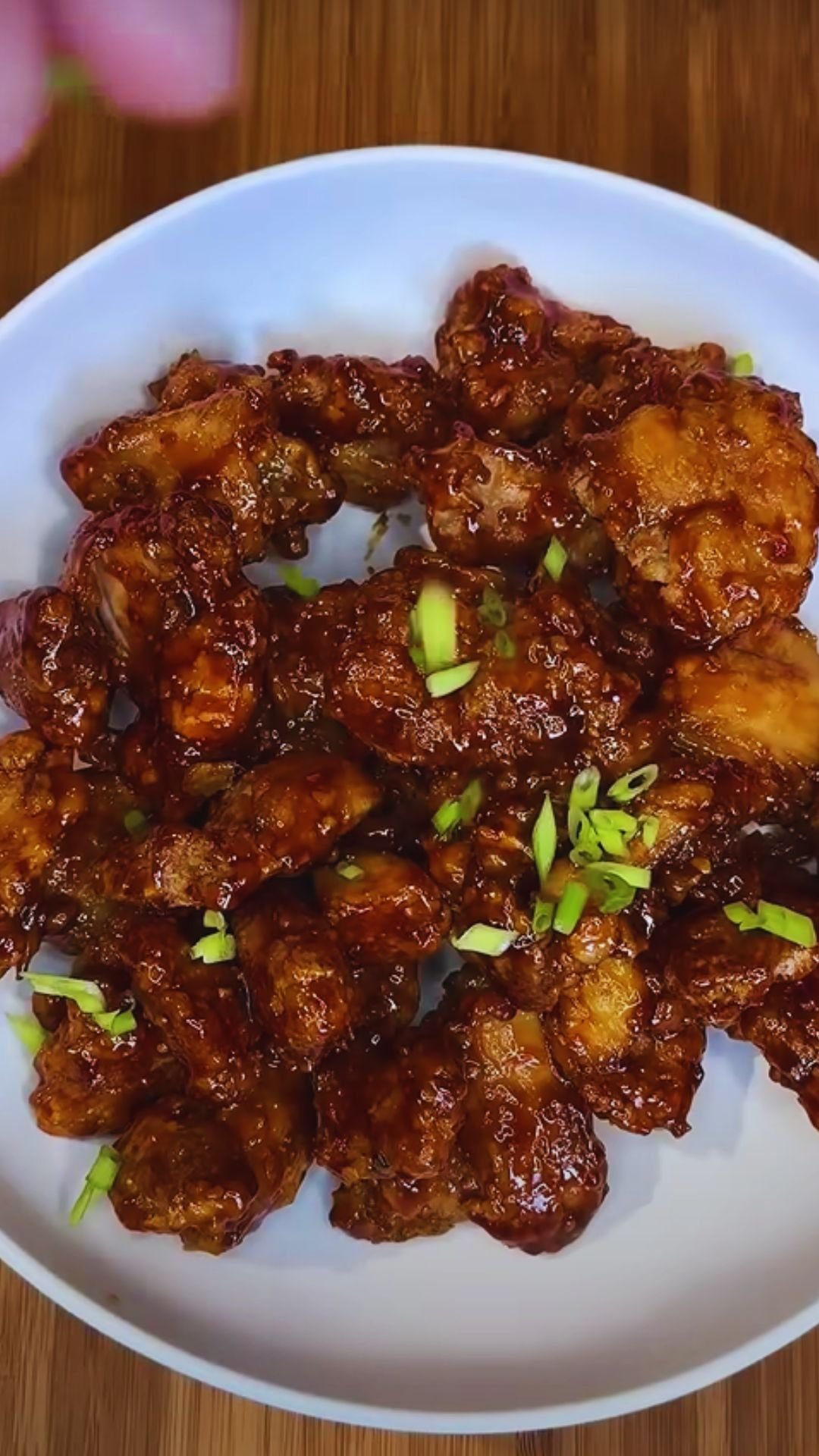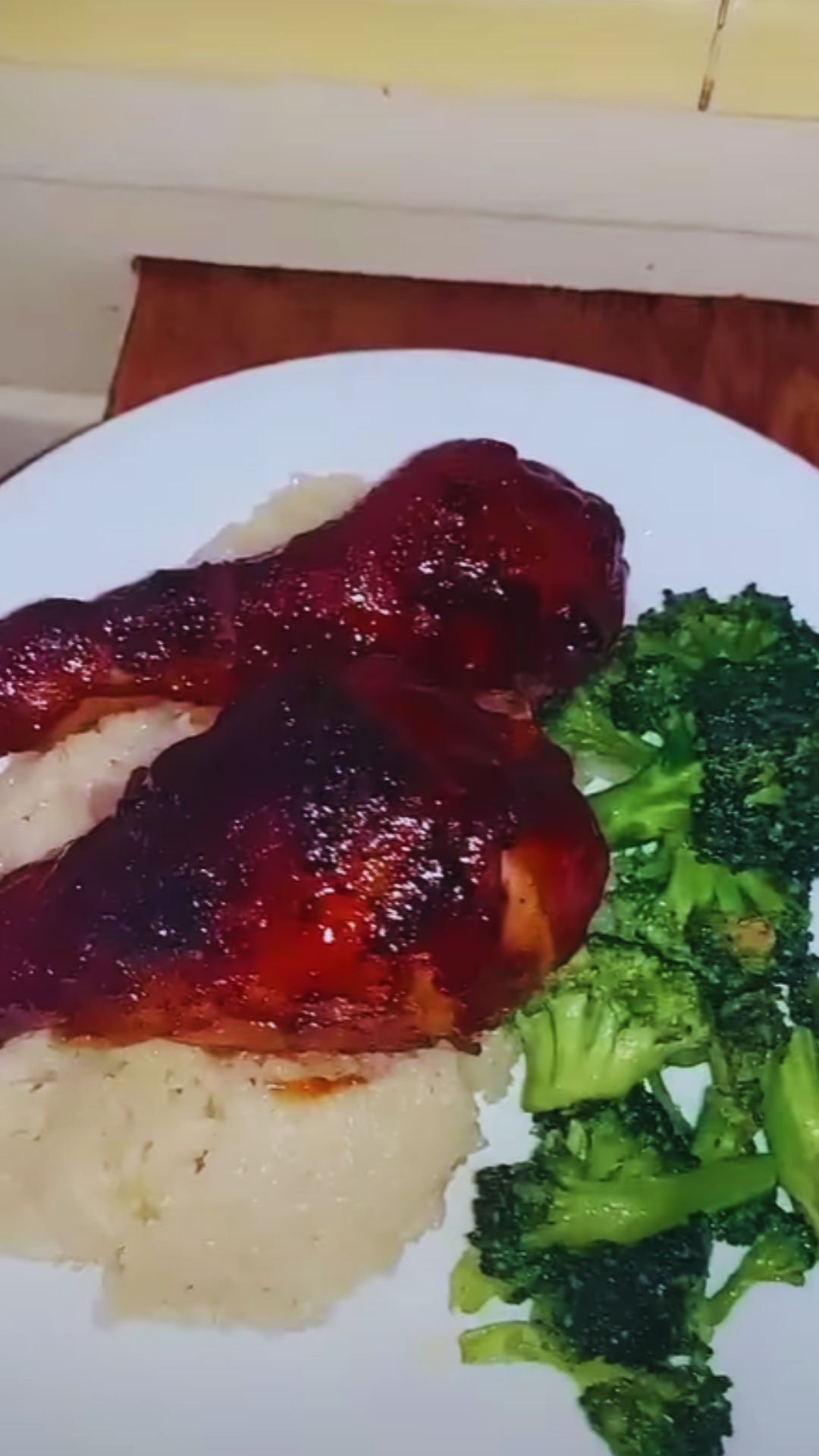There’s something magical about biting into a piece of crispy chicken coated in a sweet and tangy lemon sauce. Every time I make Chinese Lemon Chicken at home, I’m transported back to my first experience with this dish at a small family-owned restaurant tucked away in a corner of Chinatown. The contrast between the crunchy exterior and the tender chicken inside, all enveloped in that glossy, lemony sauce – it’s simply irresistible.
After years of trial and error (and many disappointing takeout versions), I’ve finally perfected my recipe for authentic Chinese Lemon Chicken. I’m thrilled to share it with you today, along with all my tips and tricks for getting that restaurant-quality result in your own kitchen.
What Makes Chinese Lemon Chicken Special?
Chinese Lemon Chicken is a beloved dish that combines Western and Eastern culinary traditions. Unlike many traditional Chinese recipes, this dish features a sauce with a pronounced sweetness and tanginess that appeals to Western palates while maintaining its Chinese cooking techniques and presentation.
The dish typically consists of:
- Chicken pieces (usually breast) that are battered and deep-fried until golden and crispy
- A vibrant lemon sauce that’s the perfect balance of sweet, tangy, and savory
- Simple garnishes like sesame seeds and green onions that add visual appeal and flavor contrast
What sets exceptional Chinese Lemon Chicken apart is the delicate balance between the crispy texture of the chicken and the bold flavors of the sauce. Too much sauce and the chicken becomes soggy; too little and you miss out on that zingy lemon flavor that makes this dish so special.
The History Behind the Dish
While many assume Chinese Lemon Chicken originated in China, it’s actually considered a “Chinese-American” creation, much like General Tso’s Chicken or Crab Rangoon. The dish likely evolved in Chinese restaurants in America during the mid-20th century as chefs adapted their cooking to suit local tastes.
The concept draws inspiration from traditional Chinese dishes like “Orange Chicken” but incorporates the bright, citrusy flavor of lemons that were more readily available in America. Over time, it has become a staple on Chinese restaurant menus worldwide, with variations appearing throughout North America, Australia, and Europe.
I find the evolution of these fusion dishes fascinating – they represent a beautiful culinary dialogue between cultures, creating something new and delicious that honors both traditions.
Ingredients You’ll Need
For the Chicken:
- 1½ pounds boneless, skinless chicken breasts
- 2 large eggs
- ¼ cup cornstarch
- ¼ cup all-purpose flour
- ½ teaspoon salt
- ¼ teaspoon white pepper
- ¼ teaspoon garlic powder
- Vegetable oil for frying (about 2-3 cups)
For the Lemon Sauce:
- ¾ cup chicken broth
- ⅓ cup fresh lemon juice (from about 2-3 lemons)
- Zest of 1 lemon
- ½ cup granulated sugar
- 2 tablespoons honey
- 3 tablespoons cornstarch
- 2 tablespoons cold water
- 1 tablespoon rice vinegar
- 1 tablespoon soy sauce (light)
- ¼ teaspoon salt
- 1 tablespoon butter (for richness and sheen)
For Garnish:
- Lemon slices
- Sesame seeds
- Chopped green onions
- Fresh cilantro leaves (optional)
Key Equipment
Before we dive into the cooking process, let’s make sure you have the right tools on hand:
| Equipment | Purpose | Recommendation |
|---|---|---|
| Heavy-bottomed pot or wok | For deep frying the chicken | A cast-iron Dutch oven or wok at least 5 inches deep |
| Cooking thermometer | For monitoring oil temperature | Digital instant-read thermometer |
| Slotted spoon or spider strainer | For removing fried chicken pieces | Stainless steel or bamboo spider |
| Mixing bowls | For battering the chicken | Glass or stainless steel, various sizes |
| Whisk | For sauce and batter preparation | Small to medium sized |
| Microplane or zester | For zesting lemons | Stainless steel with comfortable grip |
| Heavy saucepan | For preparing lemon sauce | Non-reactive (stainless steel) recommended |
| Cutting board and sharp knife | For chicken preparation | Non-porous cutting board for raw chicken |
I learned the hard way that having the right tools makes all the difference, especially when it comes to deep frying. A good thermometer is non-negotiable – maintaining the correct oil temperature ensures your chicken is crispy, not soggy or oily.
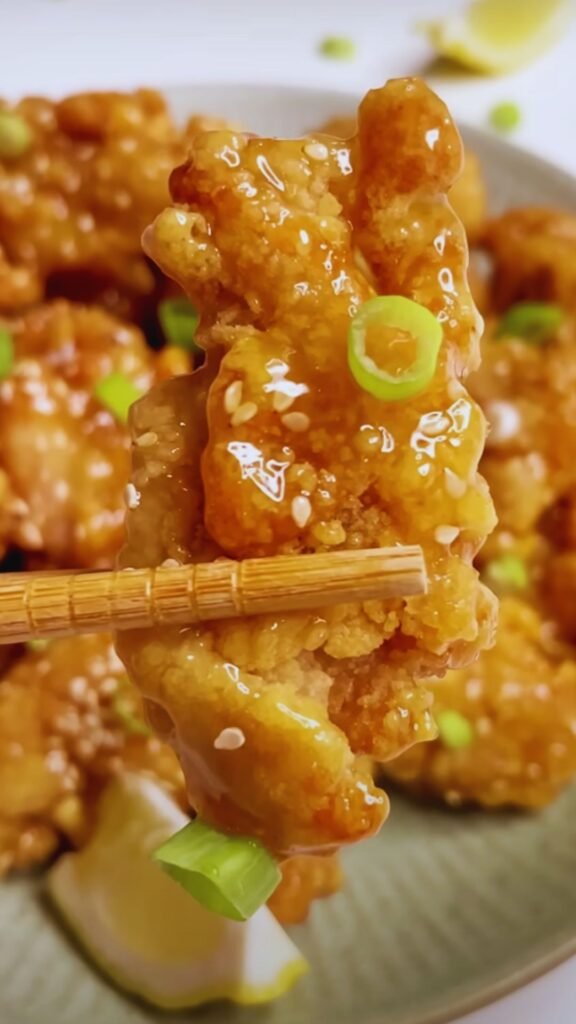
Step-by-Step Preparation
Preparing the Chicken
- Cut the chicken breasts into 1-inch cubes or 2×3-inch strips, depending on your preference. I find that uniform pieces cook more evenly.
- Pat the chicken pieces dry with paper towels. This step is crucial for the batter to adhere properly.
- In a medium bowl, whisk together the eggs until smooth.
- In a separate bowl, combine the cornstarch, flour, salt, white pepper, and garlic powder.
- Dip each piece of chicken into the egg mixture, then coat thoroughly in the cornstarch mixture, shaking off any excess.
- Place the coated chicken pieces on a plate and let them rest for 10-15 minutes. This resting period helps the coating stick to the chicken during frying.
Frying the Chicken
- In a heavy-bottomed pot or wok, heat the oil to 350°F (175°C). Use enough oil to submerge the chicken pieces completely – typically 2-3 inches deep.
- Working in batches to avoid overcrowding, carefully add the chicken pieces to the hot oil.
- Fry for 3-4 minutes until golden brown and crispy. Maintain the oil temperature between 350-375°F for optimal results.
- Remove the chicken with a slotted spoon or spider strainer and drain on paper towels.
- Once all batches are complete, re-fry the chicken pieces for an additional 1-2 minutes. This double-frying technique creates an extra crispy coating that holds up better against the sauce.
I discovered this double-frying method while traveling through Asia, and it completely transformed my Chinese Lemon Chicken. The second fry creates a sturdier crust that stays crispy even when coated with sauce.
Making the Lemon Sauce
- In a saucepan over medium heat, combine the chicken broth, lemon juice, lemon zest, sugar, honey, rice vinegar, and soy sauce.
- Bring the mixture to a gentle simmer, stirring occasionally to dissolve the sugar.
- In a small bowl, whisk together the cornstarch and cold water to create a slurry.
- While whisking the sauce constantly, slowly pour in the cornstarch slurry.
- Continue cooking and stirring until the sauce thickens enough to coat the back of a spoon (about 3-5 minutes).
- Remove from heat and stir in the butter until melted and fully incorporated.
The key to a perfect lemon sauce is finding the right balance between sweet, tangy, and savory. Feel free to adjust the sugar or lemon juice according to your taste preferences. I sometimes add a tiny pinch of dried chili flakes for a subtle heat that complements the lemon flavor beautifully.
Bringing It All Together
- Place the fried chicken in a large bowl or return it to the empty wok.
- Pour about two-thirds of the hot lemon sauce over the chicken and toss gently to coat each piece evenly.
- Transfer to a serving plate and drizzle the remaining sauce on top.
- Garnish with lemon slices, sesame seeds, and chopped green onions.
- Serve immediately while the chicken is still crispy.
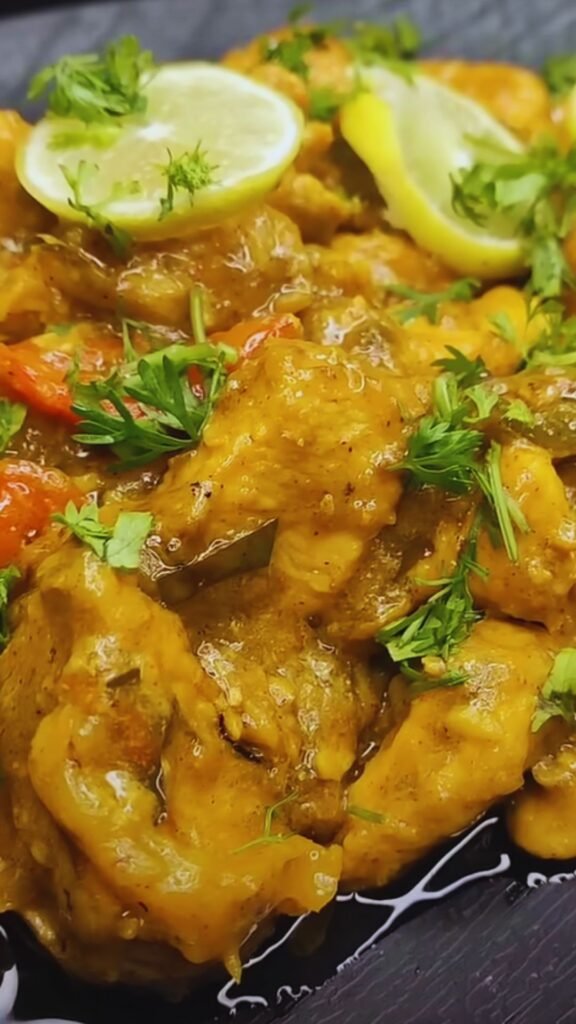
Pro Tips for Perfect Chinese Lemon Chicken
My journey to perfecting this dish taught me several valuable lessons that I’m happy to share with you:
- Fresh lemon juice is non-negotiable: The bottled stuff simply doesn’t provide the same bright, fresh flavor that makes this dish special.
- Monitor your oil temperature: Too hot, and the coating burns before the chicken cooks; too cool, and the chicken absorbs excess oil and becomes greasy.
- Don’t skip the double-fry: This extra step ensures your chicken stays crispy even after being coated in sauce.
- Sauce consistency matters: The sauce should be thick enough to coat the chicken but not so thick that it becomes gloopy. It should have a glossy, pourable consistency.
- Timing is everything: Prepare all your ingredients in advance (mise en place) so you can work quickly once you start cooking. The chicken is best when served immediately after coating with sauce.
- Balance is key: The hallmark of great Chinese Lemon Chicken is the perfect balance of sweet, tangy, and savory flavors. Don’t be afraid to adjust the seasonings to suit your palate.
Common Mistakes to Avoid
Throughout my years of making this dish, I’ve encountered (and made!) plenty of mistakes. Here are the most common ones to watch out for:
- Using chicken that’s too wet: Always pat your chicken dry before coating it.
- Crowding the pan when frying: This lowers the oil temperature and results in soggy chicken. Fry in small batches instead.
- Adding sauce too early: If you mix the sauce with the chicken too far in advance, the crispy coating will become soggy.
- Using old oil for frying: Fresh oil yields cleaner flavors and better browning.
- Over-thickening the sauce: A sauce that’s too thick won’t coat the chicken properly and can taste starchy.
- Not tasting as you go: Always taste your sauce before adding it to the chicken and adjust the seasonings if needed.
Serving Suggestions
Chinese Lemon Chicken pairs wonderfully with several side dishes:
| Side Dish | Why It Works | Preparation Tip |
|---|---|---|
| Steamed Jasmine Rice | Neutral flavor balances the tangy sauce | Add a teaspoon of butter for richness |
| Vegetable Stir-Fry | Adds color and nutrition | Use quick-cooking vegetables like snow peas, bell peppers, and bok choy |
| Hot and Sour Soup | Complements the sweet-tangy profile | Serve in small bowls as a starter |
| Steamed Broccoli | Provides a fresh, green contrast | Lightly season with sesame oil and salt |
| Egg Drop Soup | Light starter that won’t fill you up | Garnish with chopped green onions |
| Chinese Tea | Cleanses the palate between bites | Oolong or jasmine varieties work particularly well |
For a complete Chinese feast, I like to serve this dish alongside vegetable spring rolls, steamed rice, and a simple cucumber salad dressed with rice vinegar and a touch of sugar.
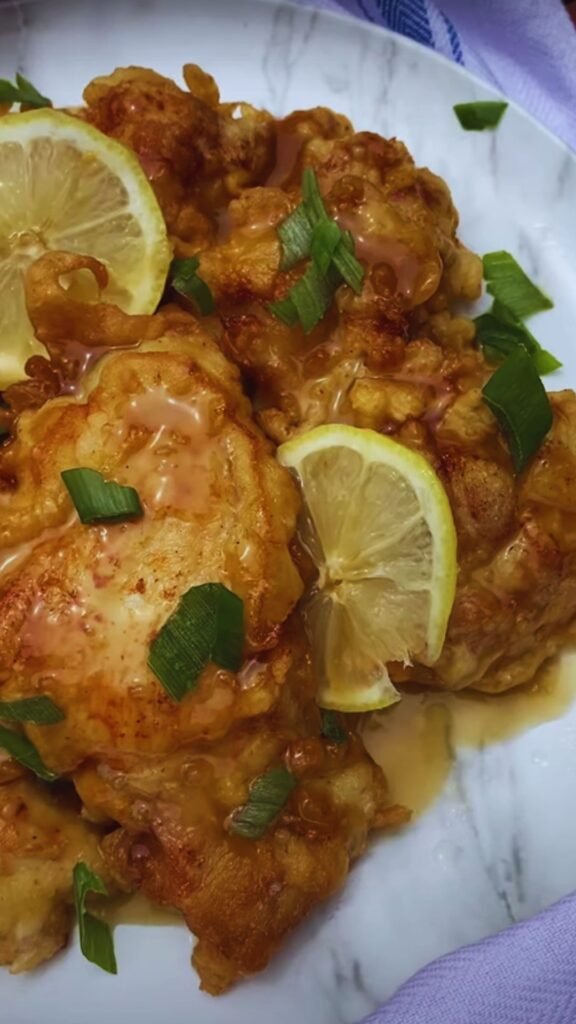
Variations to Try
While the classic recipe is delicious, don’t be afraid to experiment with these variations:
Orange Chicken Conversion
Replace the lemon juice and zest with orange juice and zest for a sweeter version of this dish.
Spicy Lemon Chicken
Add 1-2 teaspoons of chili garlic sauce or sriracha to the lemon sauce for a spicy kick.
Honey Lemon Chicken
Increase the honey to ¼ cup and reduce the sugar to ¼ cup for a more pronounced honey flavor.
Lemon Chicken with Vegetables
Add stir-fried vegetables like bell peppers, onions, and snow peas to make it a complete one-dish meal.
Gluten-Free Version
Substitute the all-purpose flour with rice flour and use tamari instead of soy sauce.
Storage and Reheating
Let’s be honest – this dish is at its absolute best when served fresh. However, if you do have leftovers:
- Storage: Allow the chicken to cool completely before storing in an airtight container in the refrigerator for up to 2 days. Store any extra sauce separately.
- Reheating: The microwave will make the chicken soggy, so I recommend reheating in a 350°F (175°C) oven for 10-15 minutes until heated through. You can also pan-fry the chicken pieces briefly to recrisp them before adding the rewarmed sauce.
- Freezing: I don’t recommend freezing this dish as the texture of the chicken will deteriorate significantly upon thawing.
Nutrition Information
For those watching their nutritional intake, here’s an approximate breakdown per serving (assuming 4 servings per recipe):
| Nutrient | Amount per Serving |
|---|---|
| Calories | 520 |
| Protein | 32g |
| Carbohydrates | 42g |
| Fat | 24g |
| Fiber | 1g |
| Sugar | 28g |
| Sodium | 720mg |
Keep in mind that these values can vary based on your specific ingredients and cooking methods. If you’re looking to reduce the caloric content, you could try air-frying the chicken instead of deep-frying or reducing the amount of sugar in the sauce.
Questions & Answers
Why does my chicken coating sometimes fall off during frying? This usually happens when the chicken is too wet before coating, or when the oil isn’t hot enough. Make sure to pat the chicken dry and allow the coated pieces to rest before frying. Also, maintain a consistent oil temperature of 350-375°F.
Can I use chicken thighs instead of breasts? Absolutely! Chicken thighs are actually more flavorful and forgiving (less prone to drying out). Just make sure to trim any excess fat and cut them into uniform pieces.
Is there a way to make this dish less sweet? Yes, you can reduce the sugar to ¼ cup and increase the lemon juice slightly. Taste and adjust as you go until you find your perfect balance.
Can I make the sauce ahead of time? The sauce can be made up to 24 hours in advance and stored in the refrigerator. Reheat gently before using, and you may need to whisk it to restore the smooth consistency.
What’s the secret to keeping the chicken crispy longer? The double-frying technique is key, as is serving the dish immediately after coating with sauce. If you’re entertaining, consider keeping the sauce and fried chicken separate until just before serving.
Can I bake the chicken instead of frying it? You can, but the texture won’t be the same. If you prefer to bake, spray the coated chicken pieces with cooking oil and bake at 425°F (220°C) for about 20 minutes, flipping halfway through, until golden and crisp.
My sauce is too thick/thin. How do I fix it? For a sauce that’s too thick, add a little chicken broth or water, a tablespoon at a time, until you reach your desired consistency. If it’s too thin, mix a little more cornstarch with cold water and add it to the simmering sauce.
What can I use instead of cornstarch if I don’t have any? Potato starch works wonderfully as a substitute and may even create a crispier coating. Tapioca starch is another good option. All-purpose flour can work in a pinch but will yield a less crispy result.
A Final Word
Chinese Lemon Chicken represents what I love most about cooking – taking inspiration from different culinary traditions and creating something that brings joy to the table. The contrast of textures, the vibrant flavor of fresh lemon, and the satisfying crunch of perfectly fried chicken make this a dish worth mastering.
Don’t be discouraged if your first attempt isn’t perfect – cooking is a journey, and each time you make this dish, you’ll discover new techniques and adjustments that work for your taste. The most important ingredient is patience, both with the cooking process and with yourself as you learn.
I hope this recipe brings a little bit of culinary adventure to your kitchen and becomes a favorite in your household as it has in mine. There’s something truly special about recreating restaurant favorites at home – not only do you save money, but you also gain the satisfaction of knowing exactly what goes into your food.
Happy cooking, and enjoy your homemade Chinese Lemon Chicken!

